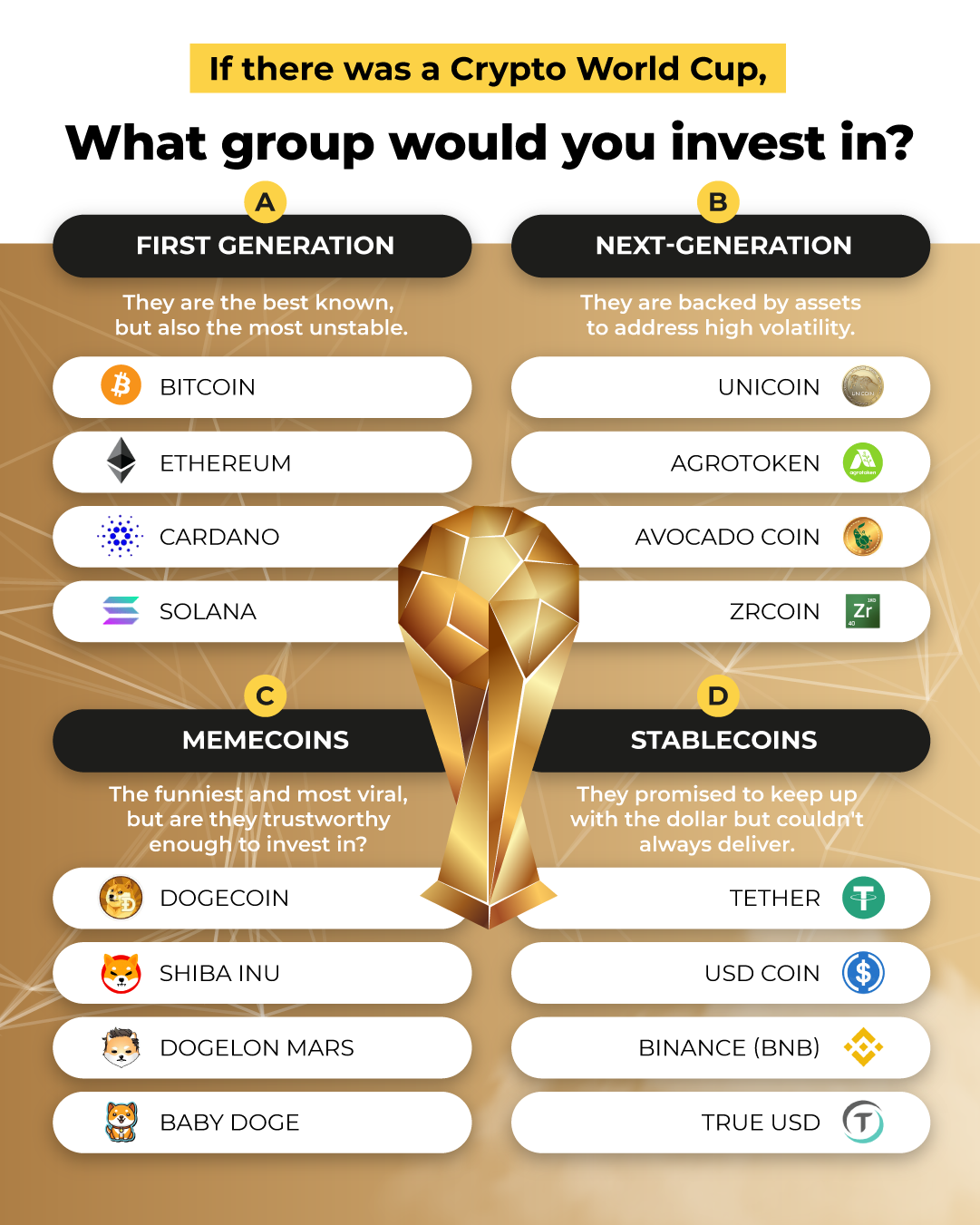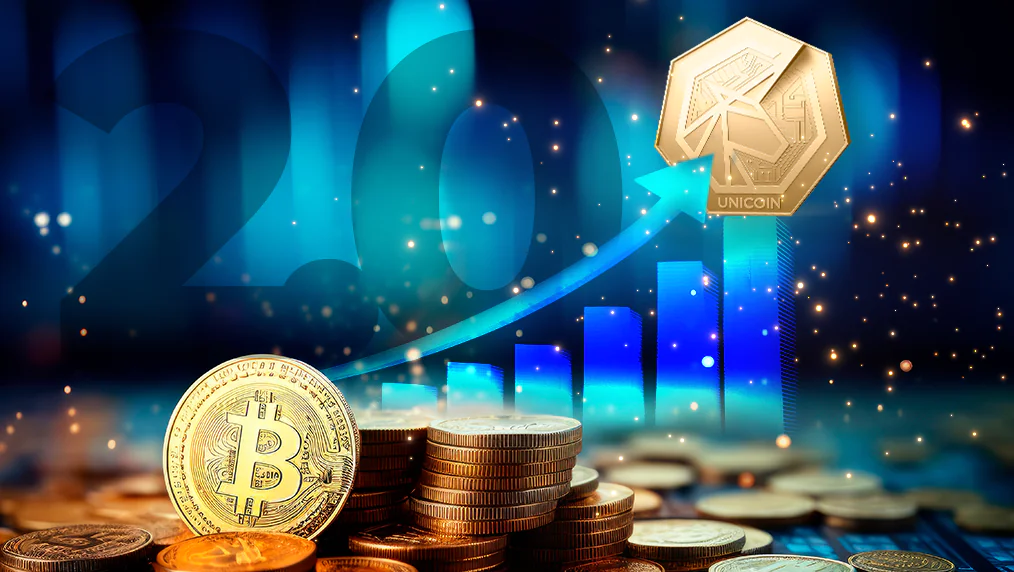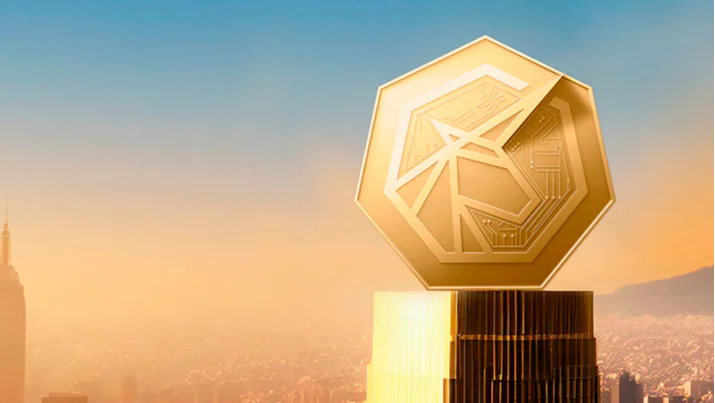Cryptocurrency World Cup: how would the groups look?
 1 min read
1 min read- December 12, 2022
- by UH News
Entering the world of cryptocurrencies is still a pending challenge for many people. The young and not so young, entrepreneurs, investors and tech enthusiasts eye the sector with increasing interest. But the enthusiasm of many is sometimes dampened by a crucial question: “which cryptocurrencies?”. Since the legendary Satoshi Nakamoto created Bitcoin in 2009, the ecosystem of cryptocurrencies has grown at a spectacular rate. According to the specialist website Coin Market Cap, there are now 22,000 cryptocurrencies and more than 500 exchanges.
Such figures can make things feel a little abstract for many, but World Cup-style “crypto rankings” are a playful, user-friendly way to get to grips with the different options. The idea is that the groups share similarities, advantages and disadvantages, offering a kind of “who’s who” of the current ecosystem of digital currencies with 16 examples. These are currencies that many people will have frequently heard about but perhaps without knowing exactly what their characteristics are.

For example, the “leader” of group A is bitcoin, the most famous of all cryptocurrencies. It’s in a group with Ethereum, Cardano and Solana, with which it shares several traits: popularity but also instability, since the history of all four shows extreme fluctuations in price.
The three remaining groups can help us understand the characteristics of other types of cryptocurrencies. For example, the so-called memecoins (led by Dogecoin ) are notable for their viral nature, while the stablecoins group includes the four best-known cryptocurrencies whose value is tied to the US dollar. Finally, there’s the group of the new generation of cryptocurrencies, led by Unicoin. This group comprises currencies that aim to avoid extreme volatility through their backing in assets.
Beyond the playful tone, this “Cryptocurrency World Cup” confirms that interest in cryptocurrencies continues to grow but that the question has now changed. It’s no longer a question of whether to opt for crypto but more a question of which crypto and why?
Related News

Defy the 70% Failure Rate: 5 Game-Changing Habits of Successful Billion-Dollar Startup Founders
How do successful founders overcome the 70% startup failure rate? Discover the strategies that help founders overcome challenges and achieve unicorn status.
- October 11, 2024
- 2 min read

Halving is Coming: Why Bitcoin is Likely to Lose its Crypto Market Dominance
The market share of the first cryptocurrency could shrink in the face of the emergence of more transparent and regulated alternatives.
- March 29, 2024
- 1 min read

The Decline of Non-Coiners is Paving Paths for Potential Users
By seeing how digital assets can complement their financial plan, the vocal minority that exists and declares the end of cryptoassets may be incorporated into the ecosystem.
- March 27, 2024
- 1 min read

Unicoin Launches Its Primary Offering on U.S. Regulated INX.One Trading Platform
Backed by Real World Assets, Unicoin Security Token is Now Officially Available on the INX Trading Platform.
- March 19, 2024
- 5 min read
